Rapid coupling between gravitational forces and the transcriptome in human myelomonocytic U937 cells
- PMID: 30185876
- PMCID: PMC6125427
- DOI: 10.1038/s41598-018-31596-y
Rapid coupling between gravitational forces and the transcriptome in human myelomonocytic U937 cells
Abstract
The gravitational force has been constant throughout Earth's evolutionary history. Since the cell nucleus is subjected to permanent forces induced by Earth's gravity, we addressed the question, if gene expression homeostasis is constantly shaped by the gravitational force on Earth. We therefore investigated the transcriptome in force-free conditions of microgravity, determined the time frame of initial gravitational force-transduction to the transcriptome and assessed the role of cation channels. We combined a parabolic flight experiment campaign with a suborbital ballistic rocket experiment employing the human myelomonocytic cell line U937 and analyzed the whole gene transcription by microarray, using rigorous controls for exclusion of effects not related to gravitational force and cross-validation through two fully independent research campaigns. Experiments with the wide range ion channel inhibitor SKF-96365 in combination with whole transcriptome analysis were conducted to study the functional role of ion channels in the transduction of gravitational forces at an integrative level. We detected profound alterations in the transcriptome already after 20 s of microgravity or hypergravity. In microgravity, 99.43% of all initially altered transcripts adapted after 5 min. In hypergravity, 98.93% of all initially altered transcripts adapted after 75 s. Only 2.4% of all microgravity-regulated transcripts were sensitive to the cation channel inhibitor SKF-96365. Inter-platform comparison of differentially regulated transcripts revealed 57 annotated gravity-sensitive transcripts. We assume that gravitational forces are rapidly and constantly transduced into the nucleus as omnipresent condition for nuclear and chromatin structure as well as homeostasis of gene expression.
Conflict of interest statement
The authors declare no competing interests.
Figures
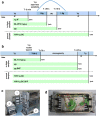
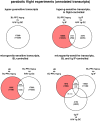
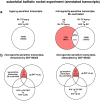
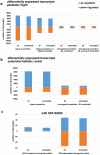

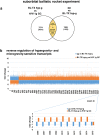
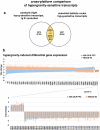

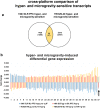
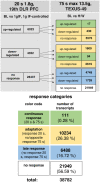
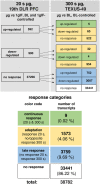
Similar articles
-
Rapid Cellular Perception of Gravitational Forces in Human Jurkat T Cells and Transduction into Gene Expression Regulation.Int J Mol Sci. 2020 Jan 14;21(2):514. doi: 10.3390/ijms21020514. Int J Mol Sci. 2020. PMID: 31947583 Free PMC article.
-
Transcriptional Homeostasis of Oxidative Stress-Related Pathways in Altered Gravity.Int J Mol Sci. 2018 Sep 18;19(9):2814. doi: 10.3390/ijms19092814. Int J Mol Sci. 2018. PMID: 30231541 Free PMC article.
-
Effects of Simulated Microgravity and Hypergravity Conditions on Arm Movements in Normogravity.Front Neural Circuits. 2021 Dec 14;15:750176. doi: 10.3389/fncir.2021.750176. eCollection 2021. Front Neural Circuits. 2021. PMID: 34970122 Free PMC article.
-
The brain in micro- and hypergravity: the effects of changing gravity on the brain electrocortical activity.Eur J Sport Sci. 2014;14(8):813-22. doi: 10.1080/17461391.2014.908959. Epub 2014 Apr 15. Eur J Sport Sci. 2014. PMID: 24734884 Review.
-
How plants grow under gravity conditions besides 1 g: perspectives from hypergravity and space experiments that employ bryophytes as a model organism.Plant Mol Biol. 2021 Nov;107(4-5):279-291. doi: 10.1007/s11103-021-01146-8. Epub 2021 Apr 14. Plant Mol Biol. 2021. PMID: 33852087 Review.
Cited by
-
Omics Studies of Tumor Cells under Microgravity Conditions.Int J Mol Sci. 2024 Jan 11;25(2):926. doi: 10.3390/ijms25020926. Int J Mol Sci. 2024. PMID: 38255998 Free PMC article. Review.
-
Modifications of Plasma Membrane Organization in Cancer Cells for Targeted Therapy.Molecules. 2021 Mar 25;26(7):1850. doi: 10.3390/molecules26071850. Molecules. 2021. PMID: 33806009 Free PMC article. Review.
-
Rapid Cellular Perception of Gravitational Forces in Human Jurkat T Cells and Transduction into Gene Expression Regulation.Int J Mol Sci. 2020 Jan 14;21(2):514. doi: 10.3390/ijms21020514. Int J Mol Sci. 2020. PMID: 31947583 Free PMC article.
-
Metabolic Dynamics in Short- and Long-Term Microgravity in Human Primary Macrophages.Int J Mol Sci. 2021 Jun 23;22(13):6752. doi: 10.3390/ijms22136752. Int J Mol Sci. 2021. PMID: 34201720 Free PMC article.
-
Reducing Virus Infection Risk in Space Environments through Nutrient Supplementation.Genes (Basel). 2022 Aug 26;13(9):1536. doi: 10.3390/genes13091536. Genes (Basel). 2022. PMID: 36140704 Free PMC article.
References
-
- Morey-Holton, E. R. In Evolution on Planet Earth 143–159 (Elsevier, 2003).
-
- Dubinin N, Vaulina E. The evolutionary role of gravity. Life sciences and space research. 1975;14:47–55. - PubMed
-
- Council, N. R. Recapturing a Future for Space Exploration: Life and Physical Sciences Research for a New Era. Vol. 6 99–203 (National Academies Press, 2011).
Publication types
MeSH terms
LinkOut - more resources
Full Text Sources
Other Literature Sources
Molecular Biology Databases

